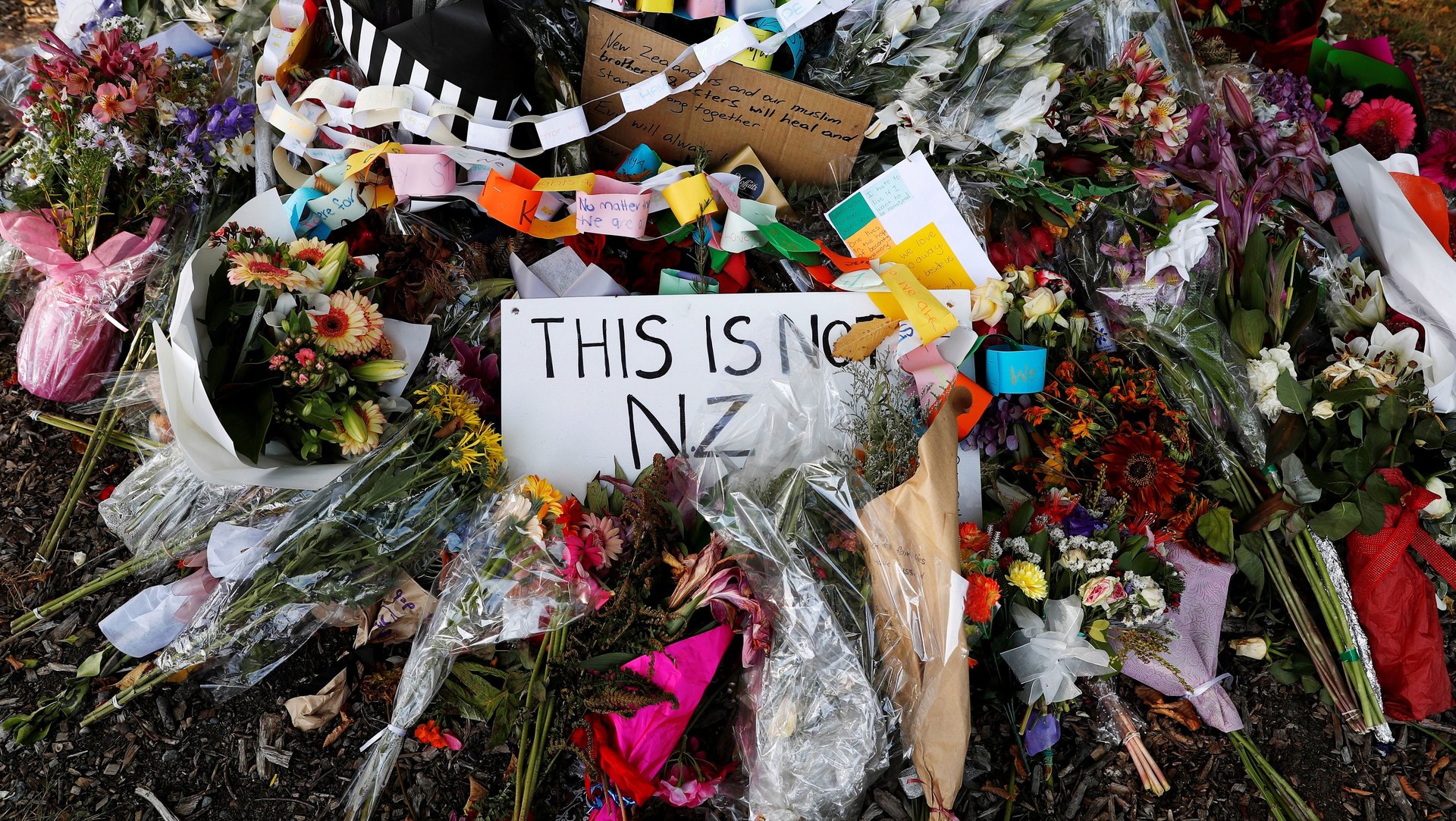Why it’s a crime to download or print the mosque shooter’s manifesto in New Zealand
The recent mass shooting at two mosques in New Zealand, a gruesome hate crime designed for maximum social media exposure, has created a number of ethical conundrums for news producers and consumers around the world. And now it’s creating free-speech concerns.


The recent mass shooting at two mosques in New Zealand, a gruesome hate crime designed for maximum social media exposure, has created a number of ethical conundrums for news producers and consumers around the world. And now it’s creating free-speech concerns.
New Zealand on Saturday banned the possession or sharing of the lengthy screed uploaded by the 28-year-old gunman who opened fire at two Christchurch mosques March 15, killing nearly 50 people. Having the document on one’s computer or having a printed copy of it is an offense punishable with 10 years in jail, while sending it to someone via the internet could be punishable with 14 years. The video footage shot of the attack and uploaded to the internet has also been deemed “officially objectionable.” In the past, New Zealand has classified some propaganda by the militant group ISIS in the same way, as well as a t-shirt offensive to Catholics and, temporarily, a book on euthanasia.
The decision was made by New Zealand’s “chief censor,” a century-old job that now usually involves classifying movies and works of literature. It’s housed in the Office of Film & Literature Classification. In an official announcement of the ban, chief censor David Shanks explained the decision:
Others have referred to this publication as a ‘manifesto,’ but I consider it a crude booklet that promotes murder and terrorism. It is objectionable under New Zealand law…
It promotes, encourages and justifies acts of murder and terrorist violence against identified groups of people…
It identifies specific places for potential attack in New Zealand, and refers to the means by which other types of attack may be carried out. It contains justifications for acts of tremendous cruelty, such as the deliberate killing of children…
There is an important distinction to be made between ‘hate speech’, which may be rejected by many right-thinking people but which is legal to express, and this type of publication, which is deliberately constructed to inspire further murder and terrorism…
New Zealanders can all play a part in denying those who exhort hatred, killing and terror. If you have a copy of this publication, delete or destroy it. If you see it, report it. Do not support the murderous objectives of its author by republishing or distributing it.
Commentators have warned that the document, which was sent to a general email for the prime minister’s office just before the attack as well as being posted on social media sites, is a product of toxic online extremist culture and have cautioned against sharing or commenting on it widely. Many sites have decided not to link to the document and also avoided quoting from it directly to avoid steering people to additional extremist content or let the shooter’s “talking points play out in the 24/7 news cycle.”
The ban is based on the definition of “objectionable” under New Zealand’s Films, Videos and Publications Classification Act 1993.
“a publication…(that) describes, depicts or expresses, or otherwise deals with matters such as sex, horror, crime, cruelty or violence in such a manner that the availability of the publication is likely to be injurious to the public good.”
“Every time a person downloads objectionable material onto their screen, there is the potential for a possession offence having been committed,” says a page that explains the reasons for a ban under these grounds. Researchers and journalists can be exempted from the ban. Some groups say the ban goes too far, and could have the contrary effect of inspiring people to seek out the document.
In addition to his screed, the shooter’s live-streamed footage of the attack was widely available before social media platforms began taking it down. New Zealand police have filed charges against people for sharing the video (paywall).
Saturday’s ban comes after prime minister Jacinda Ardern said she would never speak the name of Brenton Harris Tarrant, the man charged with murder a day after the attack. That prompted some media sites to also avoid using the name of the 28-year-old Australian.
In the US, some have taken the opposite stance on the writings. Presidential advisor Kellyanne Conway, for example, has urged people to read the screed in its entirety as part of her efforts to dissociate president Donald Trump—whose name appears in the document—from the shooter’s violence.